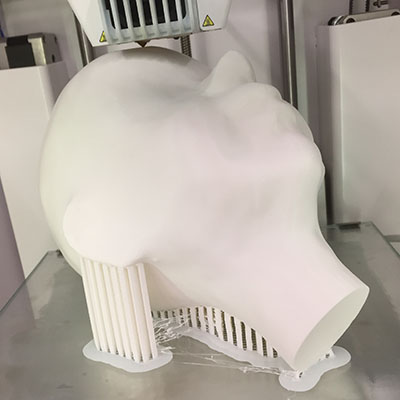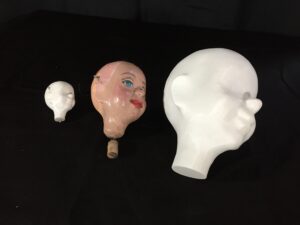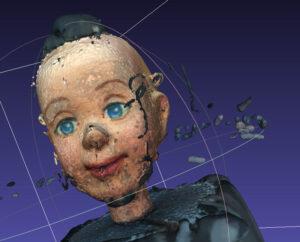building, Step by Step
Some 45 years ago, I learned something of the art of puppetry at Nicolo Marionettes. Over the past decade, I’ve started building puppets and parts for puppeteers. Working out of Futureworks Makerspace NYC in Brooklyn, I use traditional crafts, such as carpentry and metalworking, and advanced techniques such as 3D modeling and printing,
I’m proud to have recently served Tristan Allen, Nick Coppola at Puppetworks, Theodora Skipitaris, Federico Restrepo at Loco 7, Amanda Card, Tianding He, and the Object Movement Puppet Festival, among others.

The 21st Century Puppet
Making the 21st Century Puppet is a book discussing how to apply 3D printing, laser cutting, and other advanced tools to puppet making. It’s my pleasure to offer it free of charge to the puppetry community.
In 2019, I made some samples of puppet heads in the Ultimaker 3D printers at Makerspace NYC, and brought them over to show Nick Coppola at PuppetWorks in Brooklyn. I made two sets of fairy arms for Nick, and later, heads for Alice in Wonderland. And I created some experiments in virtual head casting for him.
Nick, in turn, introduced me to Mike Paterson. Mike has made a lifetime study of the puppetry of Bil Baird, one of the greatest marionette performers of the 20th Century. I’m also a great fan of Bil Baird: I saw him perform at the 1964 World Fair, and never forgot it.
Mike and I engaged in a productive research project running over a year. This project is fully documented in Making the 21st Century Puppet. I hope that you enjoy it and find it useful.

Tin Iso and the Dawn
Back in 2019, Tristan Allen and I begin to work together building a world of puppets and music, engaged in a creation myth that absorbed our attention for three years. Tin Iso and the Dawn is a shadow puppet piece built alongside a full length musical album. It was first performed in its entirety in August 2022.
From the technical standpoint, it required bridging the 19th century into the 21st, with laser-cut wooden shadow puppets, characters that exist only in 19th century magic lanterns, and innumerable hours of well-hidden carpentry and steel work. You can read more about Tin Iso and the Dawn on Tristan Allen’s web site.

A Tale of Three Alices
The Caterpillar was the first to speak.
‘What size do you want to be?’ it asked.
‘Oh, I’m not particular as to size,’ Alice hastily replied; ‘only one doesn’t like changing so often, you know.’
‘I don’t know,’ said the Caterpillar.
In the secret backstage, where the children can’t go, there are actually three Alices: a Normal Alice, a Tiny Alice, and a Giant Alice. Nick Coppola, at Puppetworks in Brooklyn, is reviving our famous production of Alice in Wonderland. The Normal Alice is in good shape, but Tiny and Giant are too worn for performance, and, in any case, never really matched Normal very well. So Nick asked me to make two identical scaled heads using 3D modelling techniques.
Here’s how I did it:
(1) First, I mounted the Normal head (without the wig) in a scanning turntable and took 406 photos in full rotation.
(2) Regard 3D finds matching features, triangulates with the known camera position and focal length of the lens. It then produces a point cloud, densifies it and produces a solid.
(3) This scan was especially cluttered, so it took me a bit more time than usual to clean and resculpt it in Meshmixer.
(4) Scaling and printing Tiny Alice at Futureworks Makerspace NYC was trivial. Six hours in the Ultimaker 3, at 20% infill, yielded a perfectly usable little puppet head that I could hold in the palm of my hand.
(5) I enlarged Giant Alice to 148 millimeters ear to ear, and ran the entire head. This is the largest print I’d ever run on an Ultimaker 3, taking over 55 hours.
And, indeed, once they’re painted, the three Alices are perfectly identical to the smallest detail, except for their sizes. Please don’t tell the children that there are three: they’re not supposed to know.

